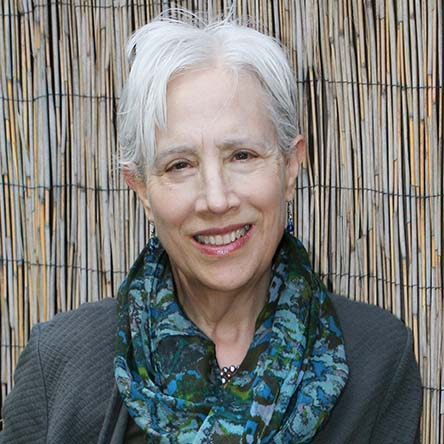Us versus Them
” data-medium-file=”https://i0.wp.com/conflictremedy.com/wp-content/uploads/2024/06/us_them5.jpg?fit=300%2C232&ssl=1″ data-large-file=”https://i0.wp.com/conflictremedy.com/wp-content/uploads/2024/06/us_them5.jpg?fit=1024%2C791&ssl=1″ class=”size-full wp-image-7361″ src=”https://i0.wp.com/conflictremedy.com/wp-content/uploads/2024/06/us_them5.jpg?resize=1080%2C834&ssl=1″ alt=”Us versus Them–thumbs up/thumbs down” width=”1080″ height=”834″ data-recalc-dims=”1″ />
Us versus Them
“We have met the enemy and they are us.”—paraphrased from Walt Kelly in the Pogo comic strip.
How inclusive is your “us”? And how can you expand it? I write a lot about the power of the stories we tell about ourselves and others to exacerbate or heal conflict. Many of these stories are about “us” versus “them”.
Them-ing
Rick Hansen, the beloved Buddhist teacher, calls this “them-ing”. We see certain people or groups as “other”, as outside the circle of care that belongs to “us”.
From my perspective, all of us are connected to each other and to our world. When we ignore this, we create enemies and false dichotomies. We demonize people based on certain categories and diminish ourselves in the process. It is easy to get caught up in this because division is so pervasive, and there are many stereotypes, assumptions, oversimplifications of who “them” is. But creating enemies is a core issue the prevents us from “dissolving” conflicts.
How can we see nuance instead of dichotomy?
One technique I’ve used with students and clients to help them see nuances instead of dichotomies is to show them a graphic of wheel with fourteen pie segments of different aspects of being human. Each segment has three levels based on privilege, and how close you are to the center of power. For example, are you white or black? College educated or not? Able bodied? Heterosexual or gay, cis gendered or trans? Native English speaker? Middle class or working class? I have them share , to their comfort level, about what factors make up who they each are. This simple small group Exercise has opened my students’ eyes and hearts. They begin to stop oversimplifying who people are and understand that we are all complex and cannot be reduced to one factor or characteristic.
Another technique I’ve begun to use is a special prayer or affirmation, which I recite every day. I have used this particularly with difficult people in my life who feel threatened by difference, fearful that, somehow, if they accept different beliefs or behavior, all they value will be at risk.
Please open their hearts and spirits to compassion and empathy.
Dissolve the lines they draw in the sand between “us” and “them,”
So they may feel a sense of oneness with all humankind.
Much of what shifts conflicts for the better happens inside us. Changing our own attitudes and beliefs can change the world around us. Like most important work, this doesn’t happen overnight, but with patience, persistence, and willingness, transformation is possible.
 Lorraine Segal has helped over 2000 leaders and others in organizations and corporations communicate more clearly, transform conflicts, and let go of resentments. The goal: to create a more harmonious and productive workplace. Through her business, Conflict Remedy, Lorraine creates customized training and Coaching programs for non-profit organizations, corporations, and government agencies and Sonoma State University. She was recently named one of the top 15 coaches in Santa Rosa by Influence Digest. She is a contributing author to the book, Stand Up, Speak Out Against Workplace Bullying. Her latest project, a memoir called: Angels and Earthworms, an unexpected journey to love, joy, and miracles, is about her transformation from miserable self-doubt to self-acceptance, true love, spiritual awareness, and right livelihood. Find out more about the memoir here. Contact Lorraine through ConflictRemedy to request a free consultation for you and your organization or to sign up for her conflict remedy newsletter and blog.
Lorraine Segal has helped over 2000 leaders and others in organizations and corporations communicate more clearly, transform conflicts, and let go of resentments. The goal: to create a more harmonious and productive workplace. Through her business, Conflict Remedy, Lorraine creates customized training and Coaching programs for non-profit organizations, corporations, and government agencies and Sonoma State University. She was recently named one of the top 15 coaches in Santa Rosa by Influence Digest. She is a contributing author to the book, Stand Up, Speak Out Against Workplace Bullying. Her latest project, a memoir called: Angels and Earthworms, an unexpected journey to love, joy, and miracles, is about her transformation from miserable self-doubt to self-acceptance, true love, spiritual awareness, and right livelihood. Find out more about the memoir here. Contact Lorraine through ConflictRemedy to request a free consultation for you and your organization or to sign up for her conflict remedy newsletter and blog.
Related blog posts and resources
What Is Conflict Transformation?
Changing Hearts, Minds, Behaviors around Conflict
The Power of Story to Shift Conflict
The post Us versus Them appeared first on Conflict Remedy.























